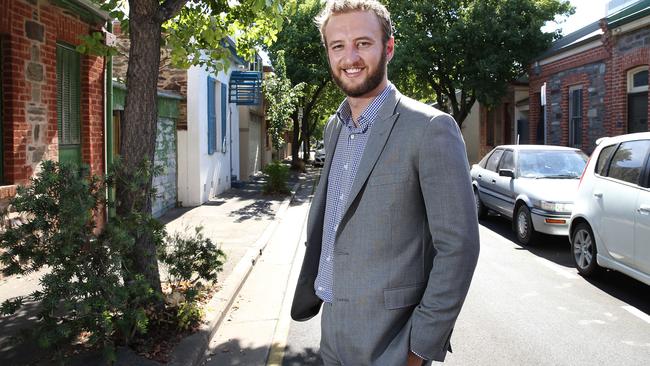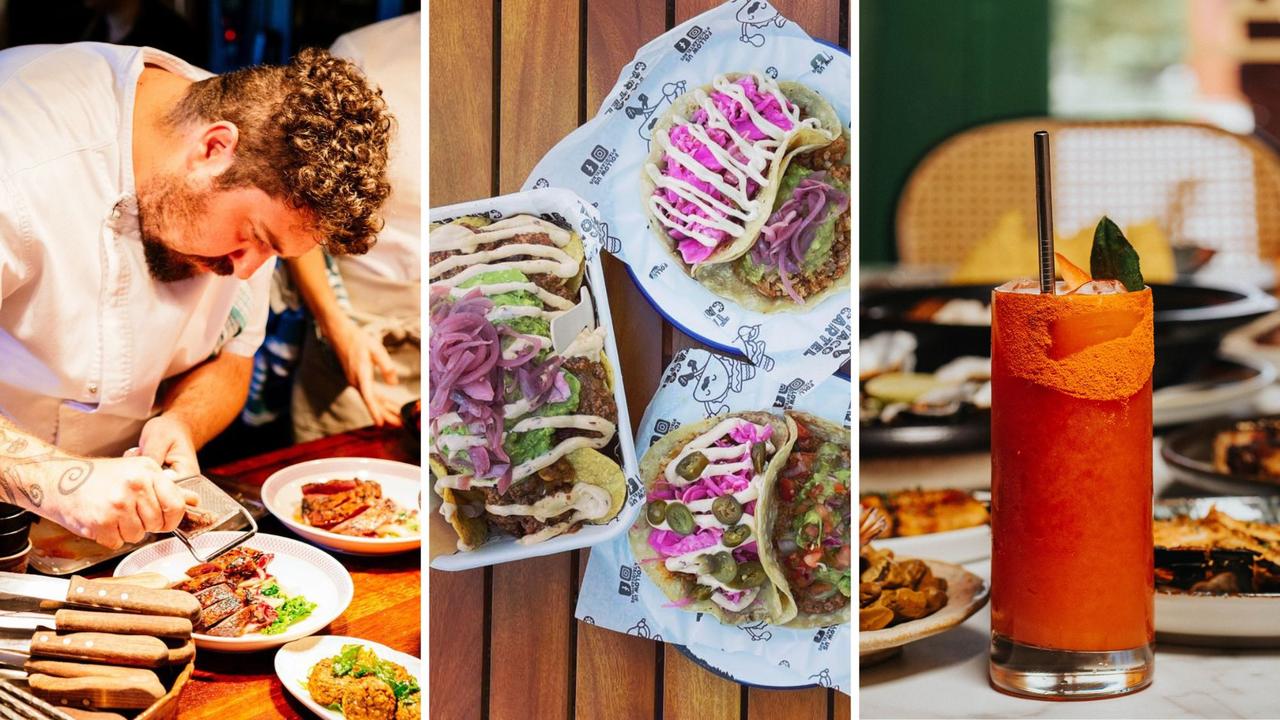Life in Adelaide: What living in the city’s southwest is really like
WHAT is living in the city’s southwest really like? Reporter Anthony Templeton’s called it home for the past 12 months. Here’s what he’s liked — and what he hasn’t.

City
Don't miss out on the headlines from City. Followed categories will be added to My News.
THE city’s southwest may be the next up-and-coming property hot spot but the area needs major improvements before it becomes a great place to live.
I’ve almost clocked up one year living in the area and it has been an interesting — although sometimes frustrating — experience.
My tree-lined street is an oasis of heritage cottages between two car yards.
The southwest is an area with a mix of great pubs, heritage-listed cottages, light industrial sheds and social service providers.
It is also home to some of the best-preserved colonial architecture in the city but other areas are filled with run down warehouses that probably should be knocked down.
But many parts of the southwest have suffered from neglect and instead of being a city showpiece many streets are scarred with potholes, cracking footpaths and the crumbling facades of beautiful old buildings.
It’s where the trendy part of the city meets the seedy side.
There’s also a regular cast of characters that forever seem to wander the southwest’s streets.
There’s the old toothless battler in a long coat and beanie — seemingly no matter what the weather — with a boom box on top of his shoulder.
Another one is the tall bloke who seems to be forever wandering in clockwise circuits around Whitmore Square and the side streets in the southwest.
And there are also less friendly encounters with groups of drunks wandering to or from a favourite gathering spot in the West Parklands.
On a fairly regular basis they cut through my street to get to their destination, and depending on the general level of intoxication the group, interactions with them can range from friendly to threatening.
The Parklands dry zone has been controversial — and the groups of people drinking have been dispersed — but it does at least provide some level of comfort for residents.
Trying to combat those behaviours in people with substance abuse problems and who come from disadvantaged socio-economic backgrounds is incredibly difficult.
There are no easy solutions.
In the last fortnight, I have seen several people walking through the streets of the southwest with blood streaming down their faces and all over their clothes — my offers of help were ignored.
More often than not, the sight of blood is accompanied by a powerful smell of alcohol.
I do not think we should tolerate drunken and anti-social behaviour anywhere in our city, whether it be on Hindley St or in the Parklands.
And there are other less than ideal aspects to living in the southwest.

Going for a walk to get a coffee in the morning on any given weekend can be in an interesting experience.
On a couple of occasions, I have found used condoms and ice pipes scattered around the backstreets.
Perhaps, it was from a new kind of street party but I didn’t get an invite.
Although, that may have just been the council’s latest attempt at improving the vibrancy of the southwest through a new placemaking initiative.
The amount of rubbish lying around parts of the southwest is appalling. Obviously, property owners need to take a lot of responsibility but the council should put in an effort to either clean up the dirtiest areas of the city or at least encourage residents and businesses to do so.
And the condition of many roads and footpaths is terrible.
Councillor Alex Antic, who represents the city’s south, said improving basic infrastructure in the area was a priority for the Adelaide City Council.
“I think the area missed out for a while because there was a focus on those big projects like Victoria Square and Rundle Mall,” he said.
Another major issue is the lack of pedestrian crossings in the southwest.
“This area is going to develop quite quickly over the next couple of years so there does need to be a back-to-basics focus here,” he said.
“It took many years to get to a point where a new crossing will be built here (in Whitmore Square).
“There are other areas where we will need to carefully look at improving the level of pedestrian safety and even redoing the footpaths and I’m confident we can get a lot of that done in the next three years (of the council term).”
Work on the pedestrian crossing, on the eastern side of Whitmore Square, is scheduled to start in April.
South West City Community Association chair Julie Jordan said the area had not been getting its fair share for years.
“We feel very positive about our part of the city because it is the most cohesive community in the city area but we need better basic infrastructure and more trees,” she said.
“There’s been a lot of promises over the years but we are still waiting.”
Ms Jordan said the southwest was not a priority for the council.
“We don’t get the same level of attention that the other areas do because we don’t have the same clout to lobby the council for things,” she said.
“And it’s unfair because we have at least the same amount, if not more, historic homes than North Adelaide but we don’t get the same about of money from the council to build better footpaths or fix the streets.”
The southwest is probably going to be one of the next spots which will experience a property boom.
Gouger St, the South Parklands and some of the city’s best old pubs are within easy walking distance.
One of the city’s bigger high-rise developments, Bohem, is being built on the edge of Whitmore Square.
It all points to a changing character for the southwest, which has always been the grungy part of town.
But there are also vacant blocks — such as the one on Gouger St commonly referred to as the Le Cornu of the southwest by local residents — and run down buildings in desperate need of redevelopment.
The gentrification process needs to be done in a manner sensitive to the area’s character.
Some of the side streets and laneways around the southwest could become spectacular little character precincts if some money is spent on restoring the row cottages and refurbishing the streetscape.
At the moment, some potentially great areas look run down and are most often used by rat-running motorists instead of pulling in sightseers to the area.
Investments should be made into restoring little side streets filled with heritage row cottages, such as Oakley St which intersects with Gouger St, so they can become more than just a shortcut for impatient motorists.
The council should consider doing more to encourage property owners to fix up their historic homes to really transform the southwest without losing its charm.


